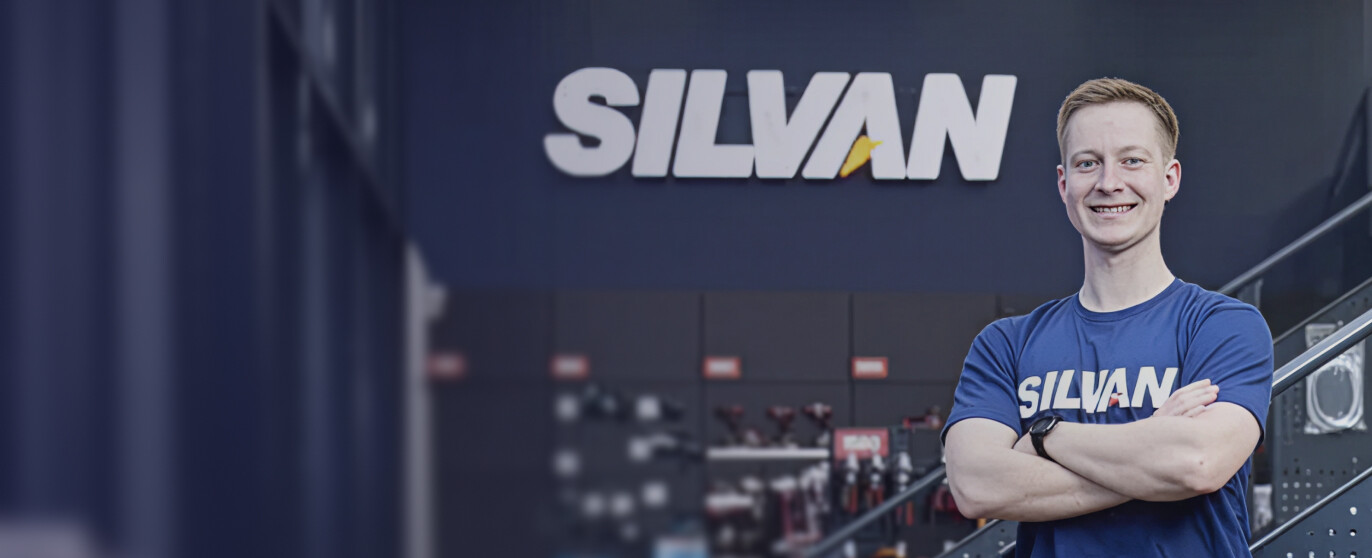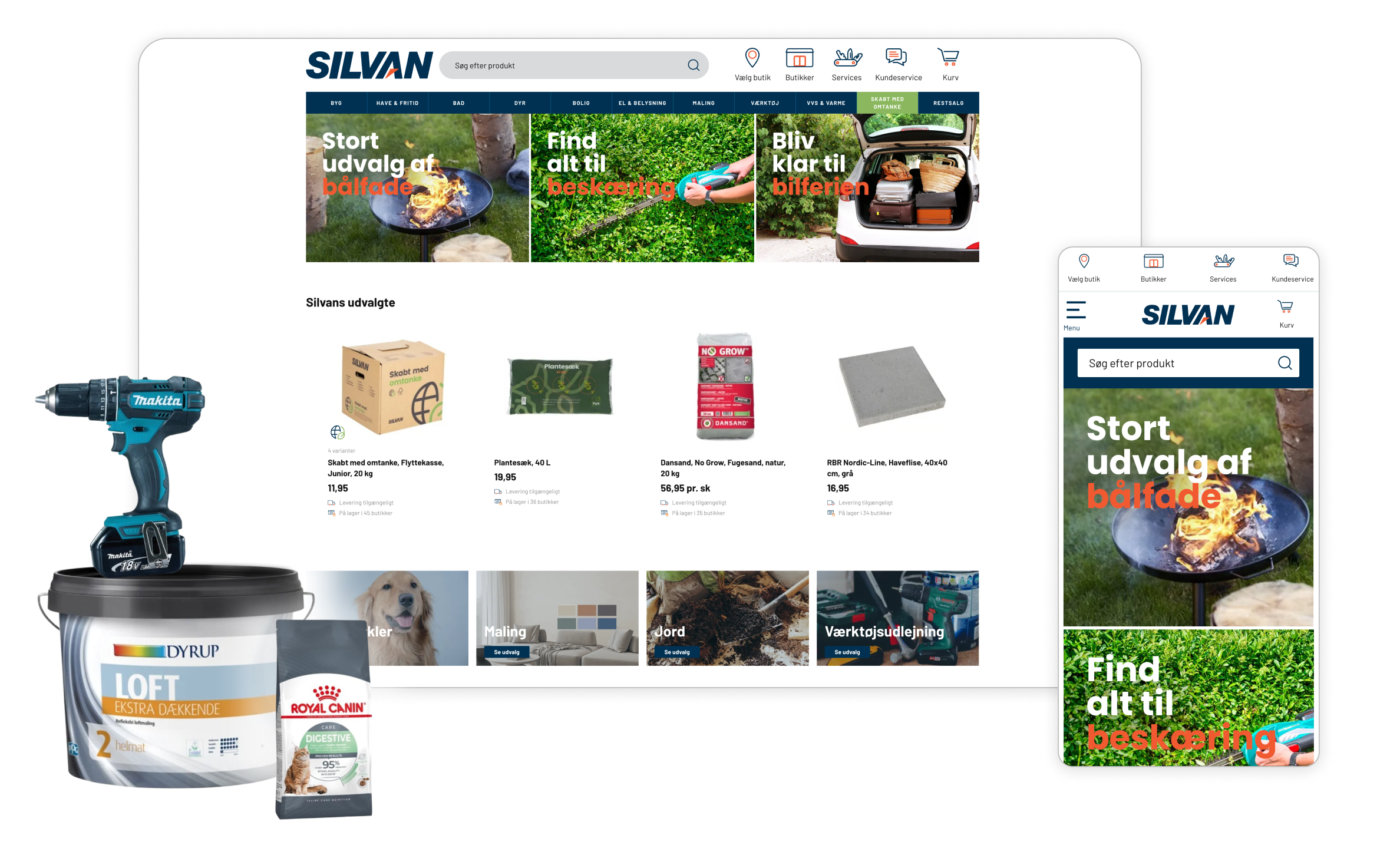

At Silvan, convenience is not just a differentiator — it’s a core promise to customers. Delivering a frictionless customer experience online is the essence of Silvan.dk, a digital storefront that primarily serves consumers who are buying everyday DIY products for their building and renovation projects.
The company’s eCommerce shop became a tremendous success, with most shoppers beginning their buying journey online. Customers use various delivery methods, such as home, same-day and click-and-collect. In addition to acting as a point of sale, these channels act as a shopping window for customers to browse the company’s catalog and see what’s in stock in a store near them.
The company’s goal was to enable a seamless omnichannel experience: Make it easy for customers to browse Silvan.dk, check real-time stock availability at a nearby store, locate the item in-store using its shelf number, complete their purchase online and pick it up — all within just 30 minutes.
However, delivering on this ambition became increasingly difficult. Silvan’s legacy eCommerce platform — implemented initially after a series of acquisitions nearly a decade ago and built on a legacy platform — had reached end-of-life, so it no longer provided modern features and required enormous developer effort to maintain.
As Vincent Højlyng, Head of eCommerce at Silvan, said, “Every time we had to even just change a color or a button, we had to deploy all the code. Since all the codes were 10–12 years old and managed by different agencies, it was like doing open heart surgery every time we tried to do the smallest things. We were too trapped… We always want to be convenient, but we were just too locked in within the box of a legacy system.”
Because Silvan didn’t fully own its development cycle, even minor changes required multi-hour deployments with manual checks and downtime coordination. Developers would stay glued to the deployment process for over two hours, while another team member had to manually order items to test whether the system still worked. The time and effort spent fixing bugs and managing releases far outweighed the ability to innovate or improve the customer experience.
Such a process wasn’t sustainable, especially with eCommerce growing rapidly and contributing a significant share of Silvan’s total revenue. Clearly, the business needed an enterprise-grade eCommerce solution that could scale with its business goals. After all, said Vincent, “We want to be the most convenient DIY retailer for everyday products. Everything we do for our customers should live up to that. And that means having a digital foundation that can move as fast as our ambition.”
Silvan’s team took a step back to rethink their entire digital foundation, not just to modernize, but to truly take control of their technology and stay true to what matters most: Making every customer interaction as simple and seamless as possible.
Silvan set out to rebuild its digital commerce foundation, creating a flexible platform built for what’s next that would allow the business to move fast, customize where needed and scale without friction. To achieve this, the team embraced a MACH®-based architecture built around the principle of separation of concerns. According to Vincent, “being able to separate concerns throughout the stack gives us much more flexibility and control in how we shape our solution.”
After evaluating several commerce platforms, Silvan selected commercetools due to “great API documentation, strong references and the flexibility we needed. It was the right match.”
To bring the vision to life, Silvan partnered with the digital agency Kraftvaerk and selected Contentful as the CMS to work alongside commercetools B2C Commerce. The company launched a complete backend rebuild, scrapping and replacing the legacy foundation with a modern infrastructure.
While the backend was entirely reimagined, the frontend stayed largely familiar, because Silvan had already built an experience customers knew and trusted. Instead of starting from scratch, the team focused on thoughtful, high-impact improvements like faster checkout flows and better performance, keeping what worked while quietly improving it.
For Silvan, the unparalleled flexibility of commercetools enables the company to build what they want and how they want, while benefiting from the stability of open platforms. “It’s great to use a product like commercetools and combine it with whatever business logic we need around it,” mentioned Vincent. “The extensibility of commercetools enables us to handle tasks in-house that previously required external developers, from customizing workflows to addressing business needs more quickly.”
For Silvan, the goal was more than launching a new eCommerce — it was also to create a lasting impact for the business and its customers. And the results speak for themselves: By improving customer satisfaction and conversion, Silvan.dk achieved tremendous growth in online-generated sales. Considering Silvan has 45 stores across Denmark, hitting that mark proved that investing in digital paid off.
The increased agility of the new site directly enhances the customer experience in several meaningful ways. The platform now delivers a smoother, faster experience that aligns with how today’s customers shop, making it easier to find products, complete purchases and come back for more.
A significant improvement was the redesign of the product pages, particularly the introduction of the “three-button delivery” model, which features three prominent call-to-action buttons: One for click-and-collect with clear messaging that items can be picked up within 30 minutes, another for standard delivery and finally, one for express delivery.
This change gave customers the clarity they needed, making delivery options easy to find and understand, so they could choose what works best for them with confidence and peace of mind. Plus, it also communicates timeframes more transparently to the customer. Feedback from users has been overwhelmingly positive, with reviews highlighting how easy it was to find products, complete payments and receive orders quickly.
In addition to the customer experience, Silvan achieved significant cost savings by moving from on-premises infrastructure to the cloud. Since developing their new cloud-native platform, the company has reduced infrastructure costs by 50%. Performance has taken a big leap forward — product and category pages load quickly, uptime is consistently high, and the overall experience is smoother. It’s not just faster than before — it’s now competitive with, and often ahead of, other major players in the market.
Enabling all these results was possible by transforming development workflows. Behind the scenes, Silvan took advantage of commercetools’ standardized eCommerce technology that’s extensible and customizable to create customer journeys according to business needs.
Cross-functional collaboration took off, especially with the marketing team: Features can now move from Figma mock-ups to live production with minimal iterations, accelerating feature releases. Another benefit of this approach is reducing dependency on a few key individuals or agencies, opening the door to a broader pool of tech talent, while enabling faster developer onboarding.
Deployment has seen a massive transformation in speed, as well as how teams operate. What used to be a fragile, two-and-a-half-hour process filled with manual steps, ERP validations and deployment now takes 5 to 10 minutes with zero downtime. This shift wasn’t accidental. It’s the result of a cloud-native, decoupled architecture that supports:
Microservices.
CI/CD pipelines for faster, automated builds and releases.
Automated testing and infrastructure-as-code to ensure reliability and repeatability.
Moving from manual to automated testing ensures stability, so teams can focus on building rather than bug fixing. As Vincent put it, “We’re way more efficient in the way we spend our development budget now. Instead of just maintaining the status quo, we’re able to focus on building new capabilities that drive real business value.”
With commercetools, we can develop more at a lower cost and scale much faster than before. If we had tried to do the same amount of development on our old platform, it would have involved significant investments and taken longer. Now we have the flexibility and performance of an enterprise eCommerce solution. The time to market from idea to implementation is also dramatically shorter. We can describe an idea, hand it to our developers and have it built, tested and deployed quickly and efficiently.
Head of eCommerce, Silvan
